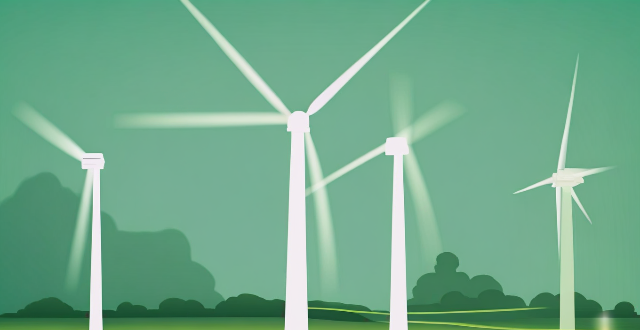The efficiency of wind energy is influenced by factors such as capacity factor, technological advancements, and site specificity. Compared to other renewable sources like solar, hydropower, geothermal, biomass, and tidal/wave energy, wind energy has a relatively high capacity factor ranging from 35% to 45%. Technological improvements have increased the efficiency of wind turbines over the years, making them more productive. However, the efficiency of wind farms is highly dependent on the location, with optimal sites achieving higher efficiency rates. In conclusion, wind energy compares favorably to other renewable sources in terms of efficiency, but the choice between different renewable energies often depends on local conditions, economic factors, and technological advancements.

Wind Energy Efficiency Compared to Other Renewable Sources
Wind energy has become a significant player in the renewable energy sector, and its efficiency compared to other renewable sources is a topic of interest for many. Let's delve into this comparison:
Key Factors Influencing Efficiency
Capacity Factor
- The capacity factor of a wind turbine measures how much electricity it actually produces compared to its potential maximum output if it operated at full nameplate capacity continuously.
- Modern wind turbines have capacity factors ranging from 35% to 45%, which is quite high compared to some other renewable sources like solar (which can range from 15% to 25%).
Technological Advancements
- Technological improvements have significantly increased the efficiency of wind turbines over the years.
- Tall towers and longer blades now allow turbines to capture more consistent and stronger winds, increasing overall productivity.
Site Specificity
- Wind resources vary greatly by location, making the efficiency of wind farms highly site-specific.
- Optimal sites with strong and consistent winds can achieve higher efficiency rates than those with more variable wind patterns.
Comparing Wind Energy to Other Renewables
Solar Energy
- Pros: Solar energy has the advantage of being available virtually anywhere with sunlight, requiring less land than wind farms for the same power output in some cases.
- Cons: It is affected by nighttime and weather conditions, which can reduce its overall efficiency unless paired with storage solutions.
Hydropower
- Pros: Hydropower is one of the most efficient renewable sources, sometimes exceeding 90% efficiency in ideal conditions.
- Cons: Its applicability is limited to areas with sufficient water flow, and it can have significant environmental impacts.
Geothermal Energy
- Pros: Geothermal energy offers very high capacity factors, sometimes above 90%, as it relies on the Earth's internal heat.
- Cons: It is geographically limited to areas near tectonic plates and can involve high upfront costs for drilling.
Biomass Energy
- Pros: Biomass can provide a steady supply of energy and is versatile in terms of feedstock options.
- Cons: Efficiency can be lower than wind and other renewables, and there are sustainability concerns regarding the source of biomass materials.
Tidal and Wave Energy
- Pros: These marine-based renewable sources offer predictable energy production and high capacity factors.
- Cons: They are still in the early stages of development and face challenges related to cost, technology, and environmental impacts.
Conclusion
In conclusion, wind energy compares favorably to other renewable sources in terms of efficiency, especially when considering modern turbines in optimal locations. However, the choice between different renewable energies often depends on local conditions, economic factors, and technological advancements. A mix of renewable sources tailored to specific regions and circumstances will likely provide the best solution for a sustainable energy future.